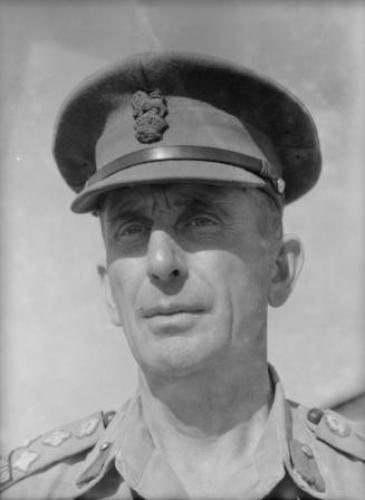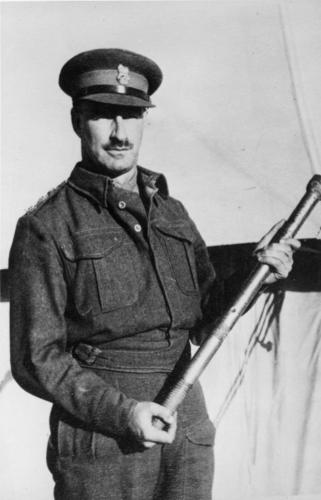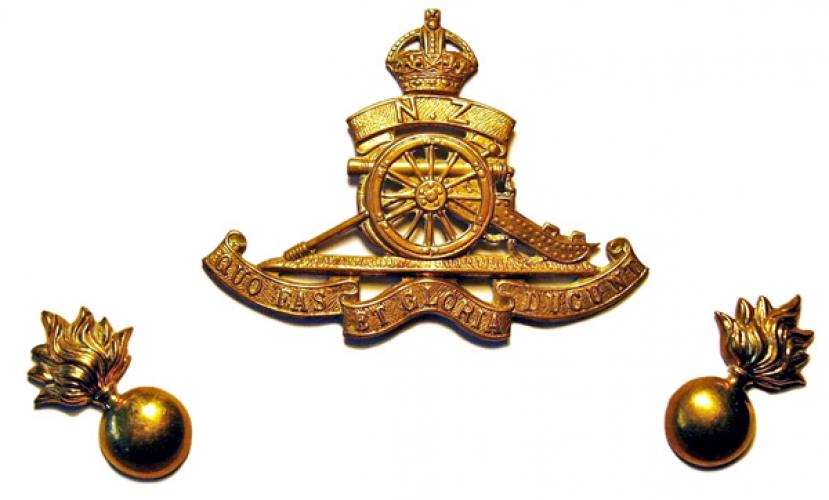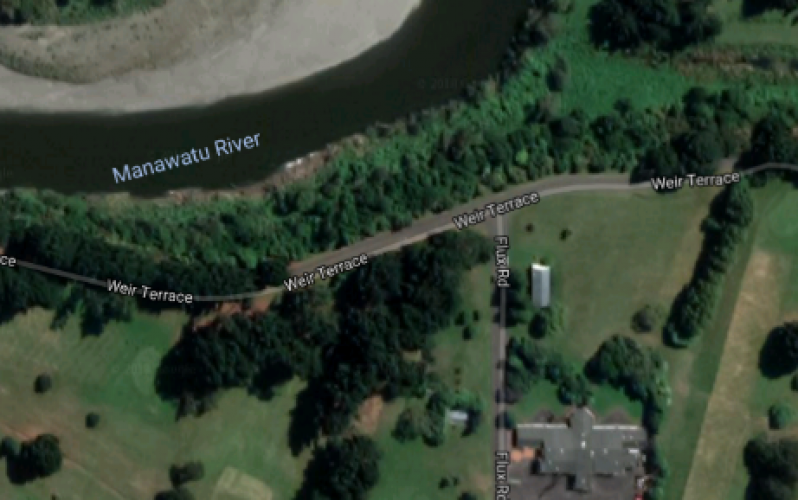283 Weir Terrace Linton Military Camp Palmerston North, aerial view 2018
Reason for the name
This street was named in honour of Major General Sir Stephen Cyril Ettrick Weir, KBE, CB, DSO & Bar who was a New Zealand military leader and diplomat. Most streets within NZDF Camps and Bases are named in honour of prominent people, battles, campaigns, ships, aircraft and places creating a rich history of our military service. Weir Terrace Linton is one of the longest streets in the Camp.
Born in Otago, Weir became a professional soldier in 1927. He served in a number of postings around the country until the outbreak of the Second World War. Seconded to the Second New Zealand Expeditionary Force, he commanded a field regiment during the campaign in Greece and Operation Crusader. He was Commander, Royal Artillery of the 2nd New Zealand Division for two years, and in the absence of its nominal commanding officer Major General Bernard Freyberg led the division for a period in 1944. Late that year, he was appointed commander of the British 46th Infantry Division. After the war he was Quartermaster General of the New Zealand Military Forces before starting a five-year term as Chief of the General Staff. He retired from the military to become ambassador to Thailand in 1961. He retired from the civil service in 1967 and died in Tauranga two years later at the age of 64
Author: The Poppy Places Trust and Cherrie Lawson
Weir was born in the Heathcote Valley, near Christchurch. His father, a fireman, was an Irish immigrant while his mother was originally from Christchurch. From an early age, Weir had ambitions of a career in the military. After completing his education at Christchurch West District High School, he was one of the first ten cadets from New Zealand to enter the Royal Military College at Duntroon, Australia, in 1911.
Following the outbreak of the First World War, Weir volunteered for the New Zealand Expeditionary Force (NZEF) without having completed his course at Duntroon. He embarked with the main body of the NZEF on 16 October 1914. A lieutenant in the Auckland Infantry Battalion, he participated in the Gallipoli Campaign and was wounded during the Second Battle of Krithia on 8 May 1915. He was later repatriated to New Zealand.
After recovering from his wounds, Weir joined the New Zealand Staff Corps. He served in a number of staff positions for the next several years. In 1930, he was named commander of a military police contingent that was raised for service in Western Samoa but was ultimately not required. He later served as a staff officer at Central Command and at defence headquarters. In 1937 he was a colonel and was part of the New Zealand contingent sent to London for the coronation of King George VI and Queen Elizabeth. He was later aide-de-camp to New Zealand's governor general.
Weir was a lieutenant colonel and in command of the Northern Military District when the Second World War began. He was promoted to colonel and then brigadier in 1940 and commanded the Central Military District. When the 4th Division, one of three intended for home defence, was raised in April 1942 he was made its commander and promoted to temporary major general. He was appointed a Commander of the Order of the British Empire the same year.
In December 1942, Weir was posted to the headquarters of the Second New Zealand Expeditionary Force (2NZEF) in Egypt. He was responsible for the administrative needs of the 2NZEF. In January 1943, while on a visit to the 2nd New Zealand Division which was positioned on the outskirts of Tripoli, Weir, together with Brigadier William Gentry and Major General Bernard Freyberg, were ambushed and came under fire from Italian and German troops. Freyberg escaped and organised a party from a machine gun company to retrieve the brigadiers, but both had managed to evade capture by the time of its arrival. On linking up with the retrieval party, Weir stated he was "... too old for this, I'm too old for this."
From November 1943, Weir served as commander of New Zealand forces in Egypt. In 1945 he returned to New Zealand as Quartermaster General of the military. For his service with the 2NZEF he was mentioned in despatches.
In January 1946 Weir succeeded Lieutenant General Edward Puttick as Chief of the General Staff, New Zealand Military Forces. His temporary rank of major general was made substantive, and he was awarded the United States Legion of Merit. In his new role, he had to oversee the demobilisation of 2NZEF and contend with a military transitioning from a wartime footing to peacetime soldiering. As the threat of the Cold War increased, he favoured the reintroduction of compulsory military training and the reconstitution of the Territorial Force as part of an overall commitment to send forces to the Middle East in the event of war with Russia. He retired from the military in September 1949, having been appointed a Knight Commander of the Order of the British Empire in the 1948 King's Birthday Honours.
Weir spent his later years in Cambridge. He died in Hamilton on 11 July 1961, survived by his wife and daughter. After a funeral service in Cambridge, he was buried at the nearby Hautapu Cemetery.









